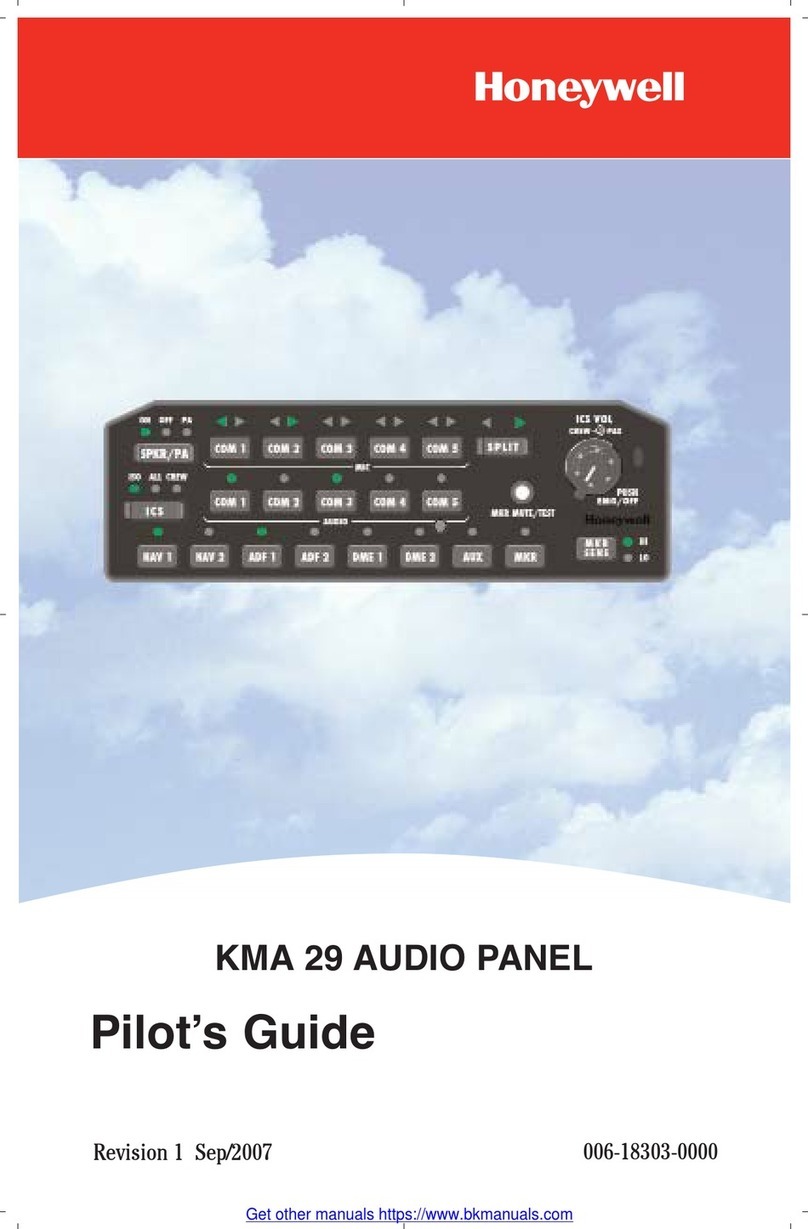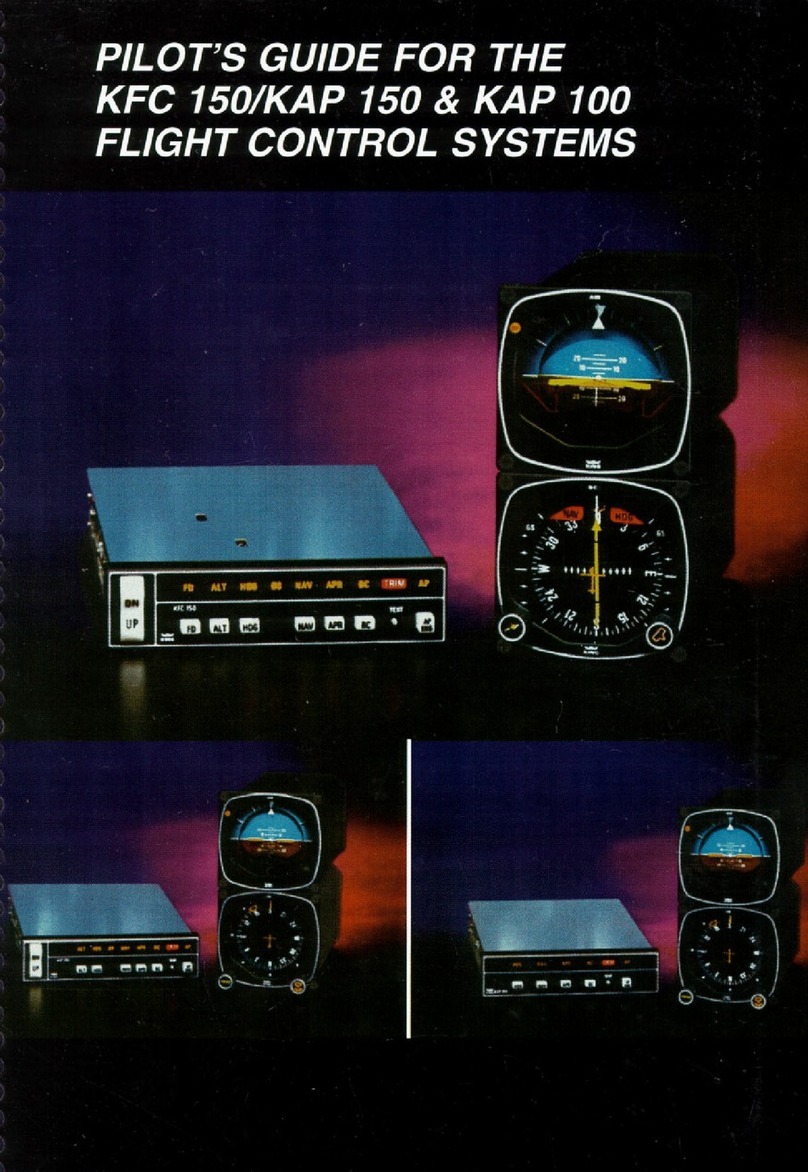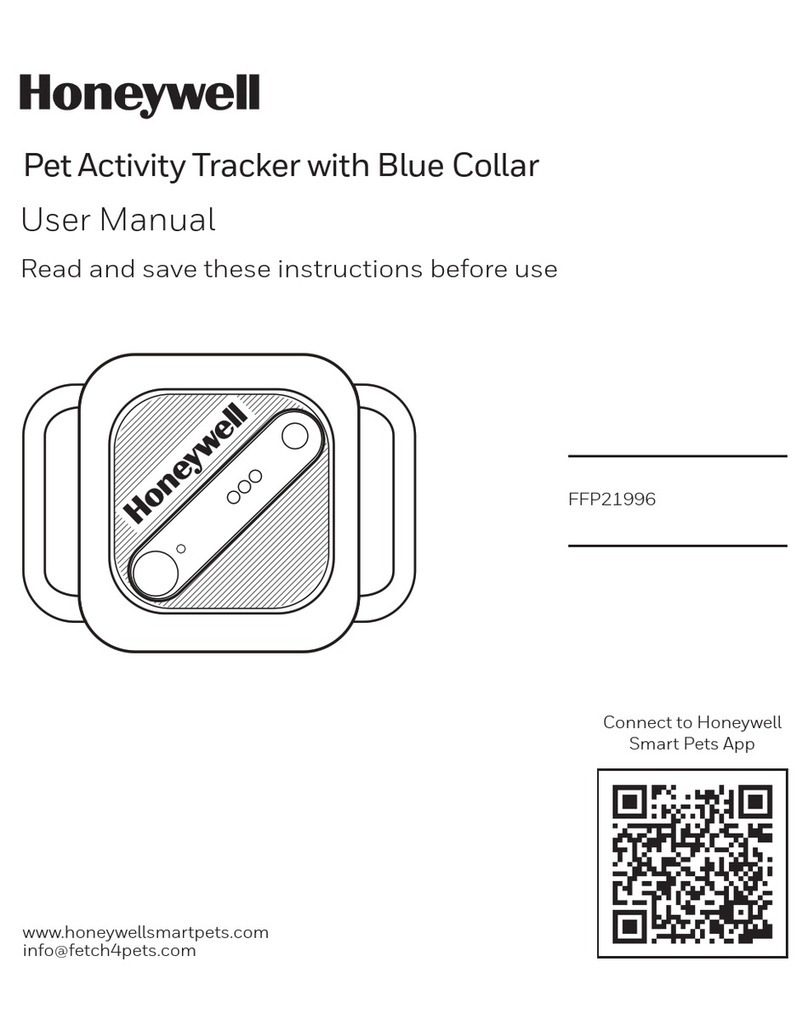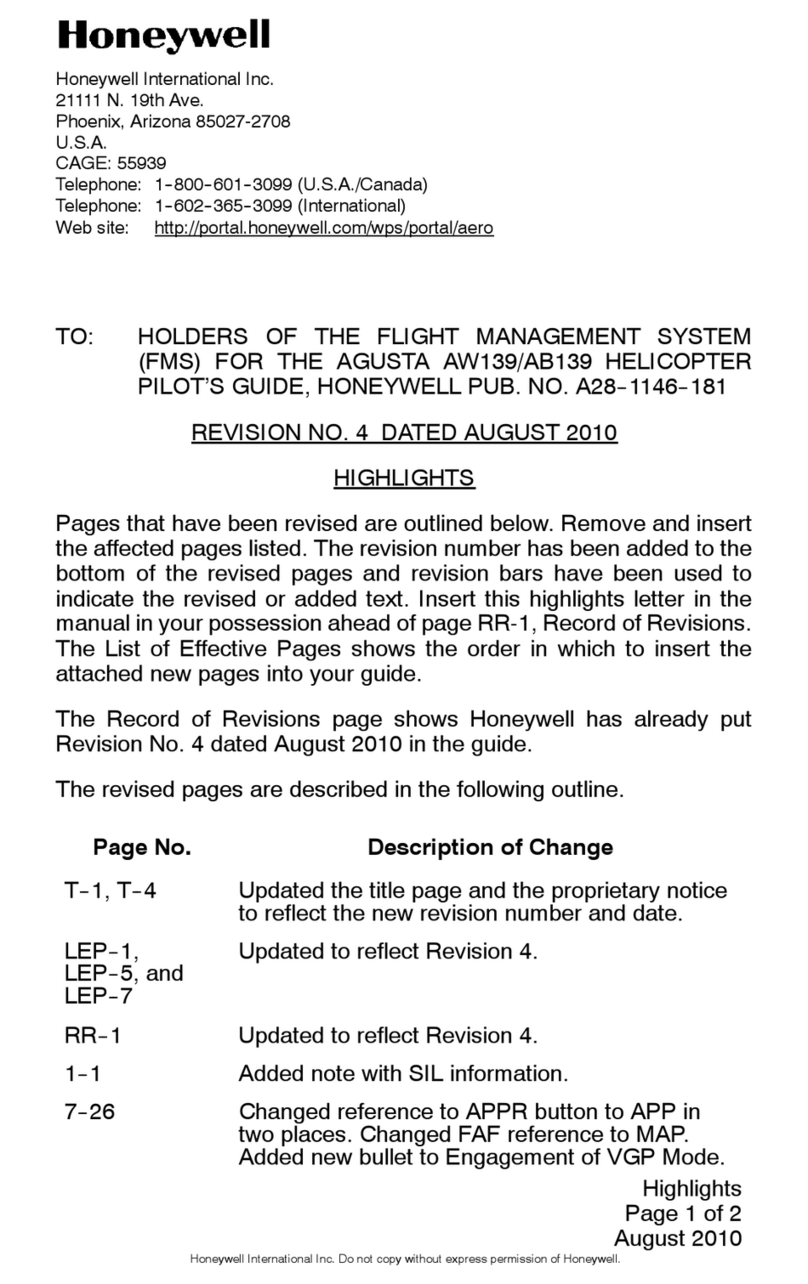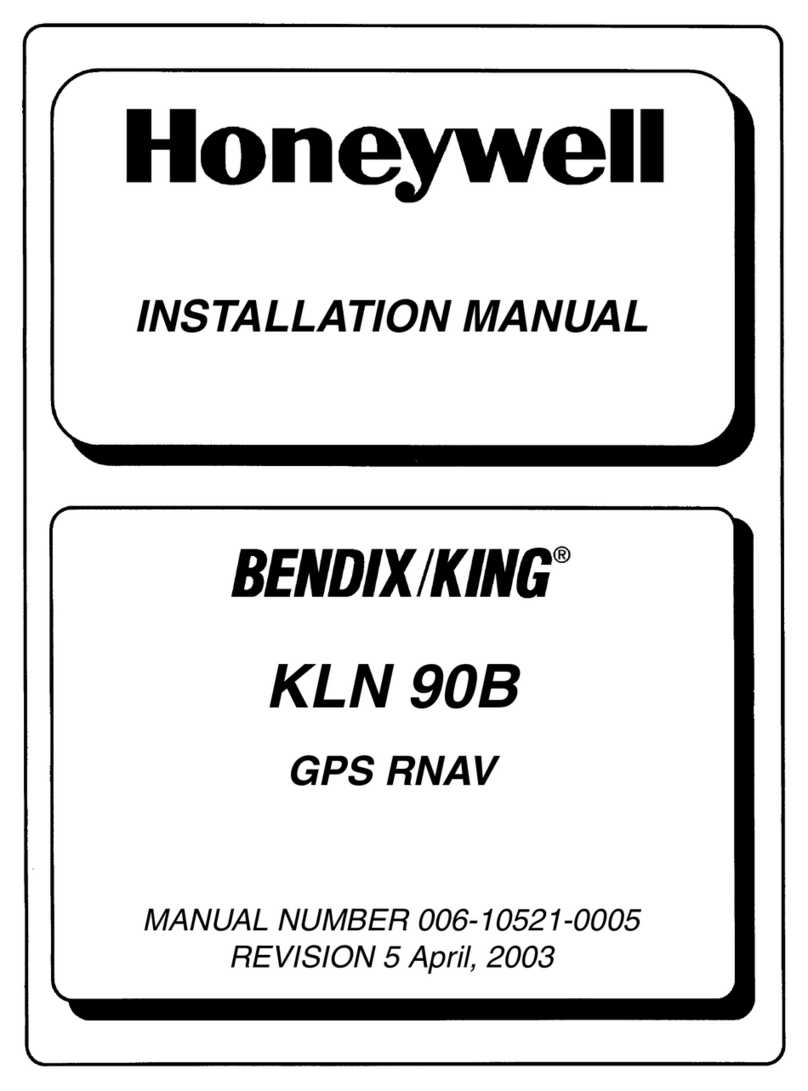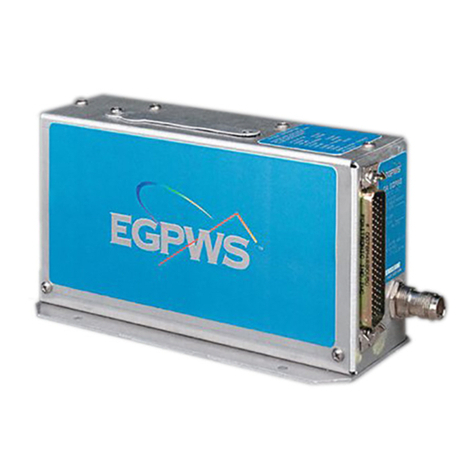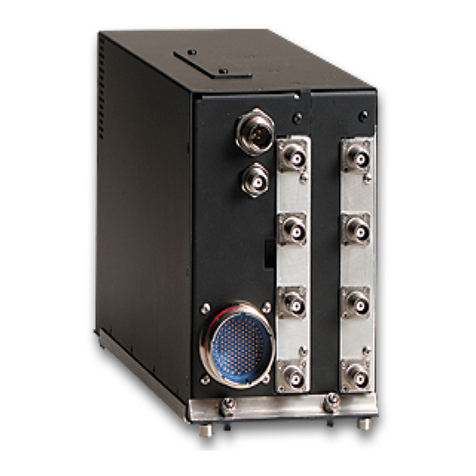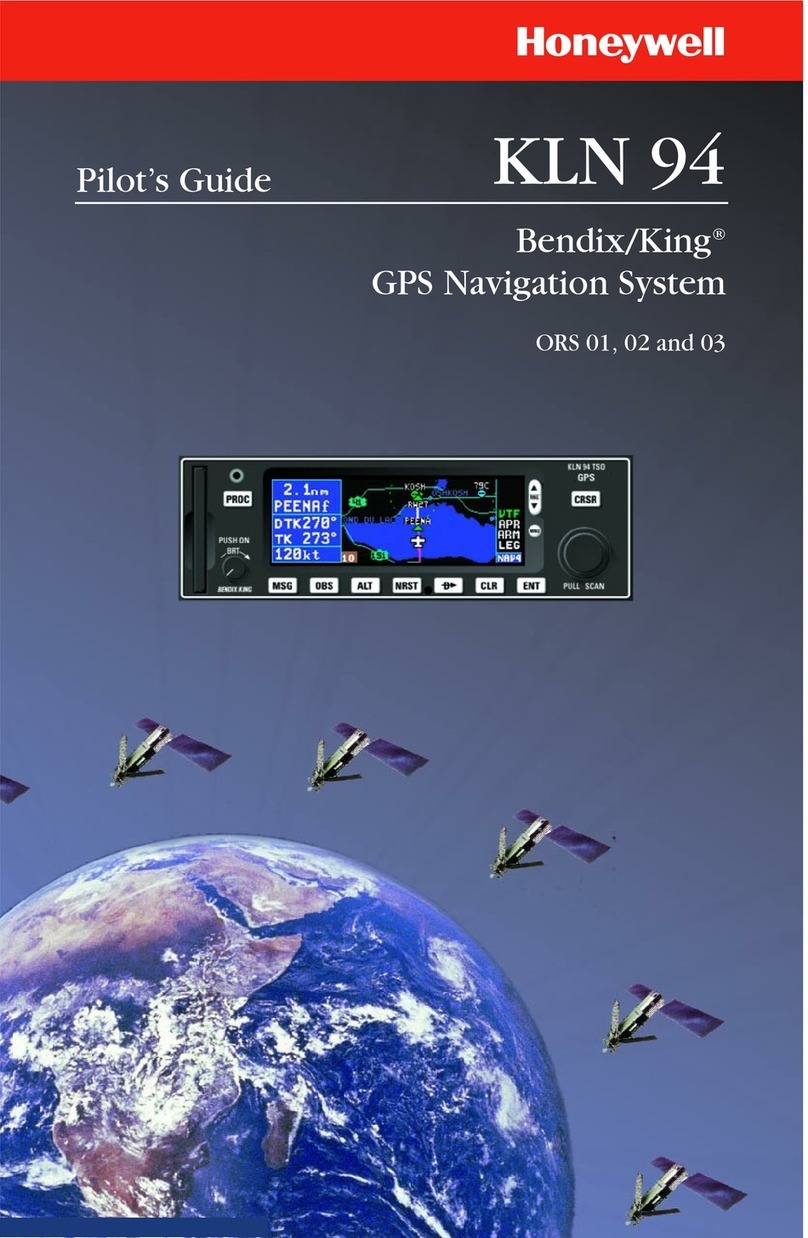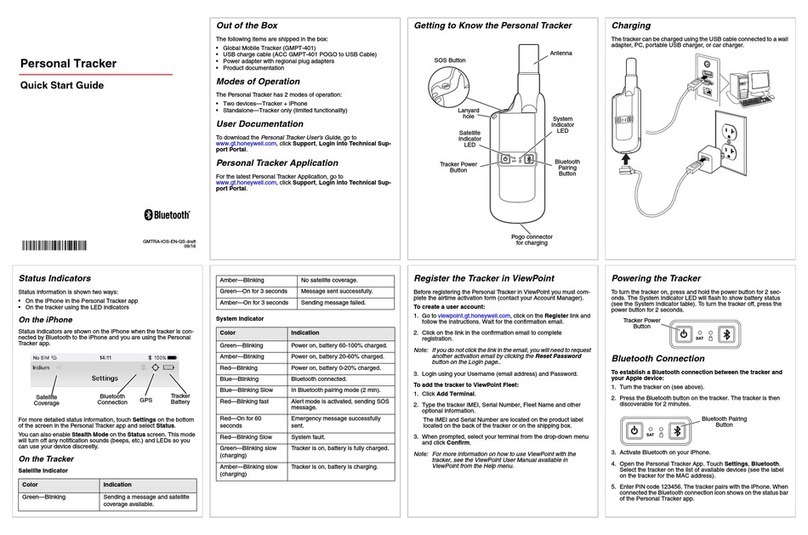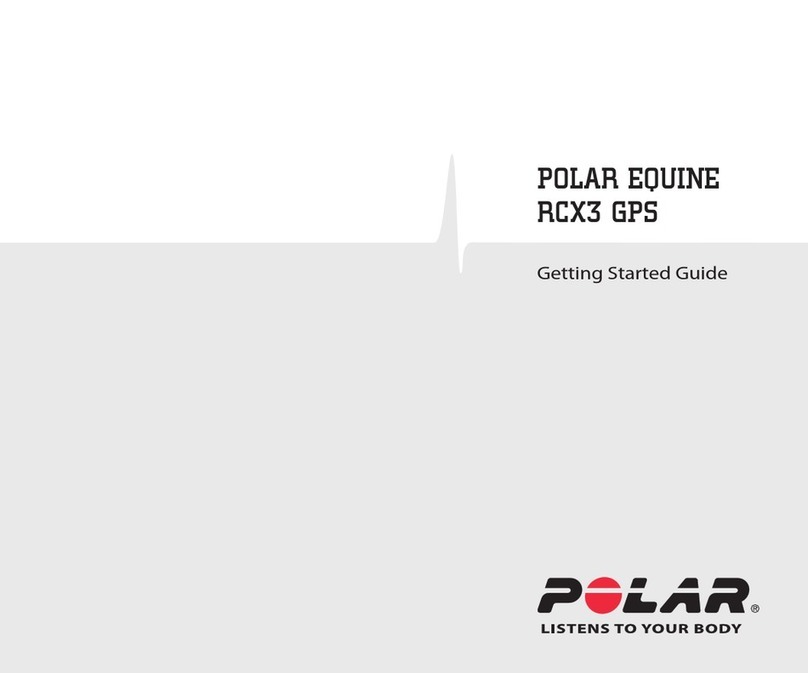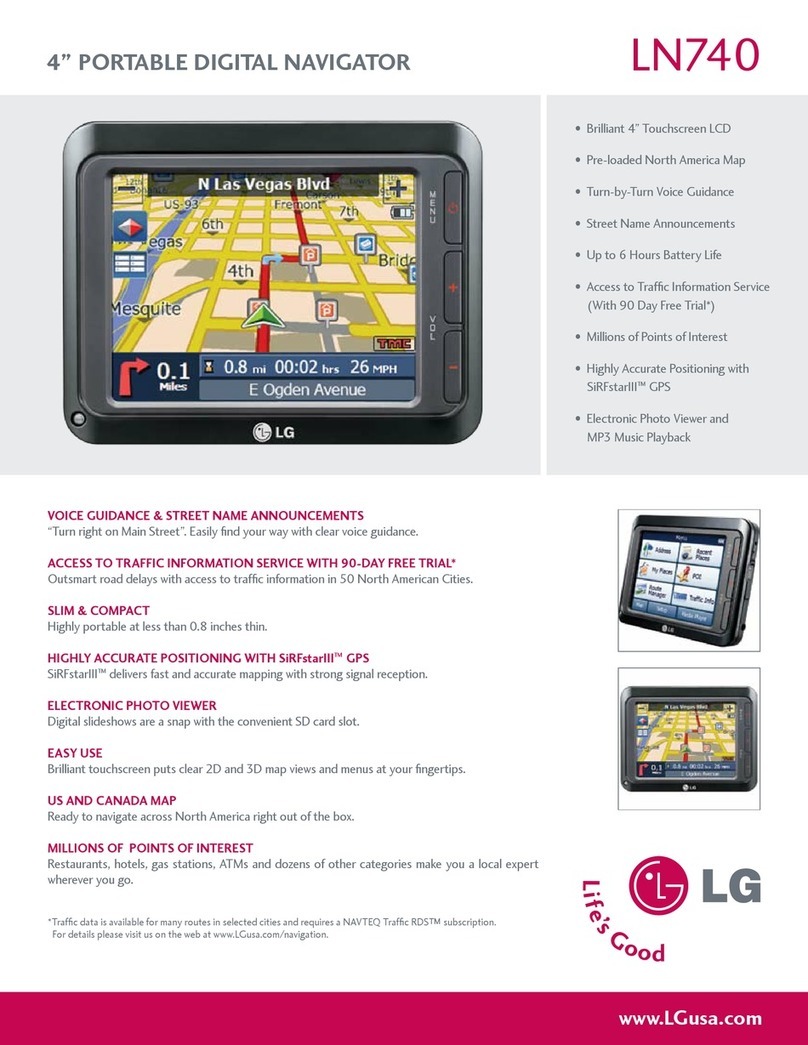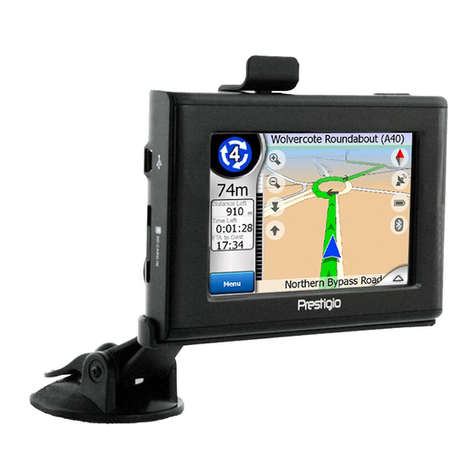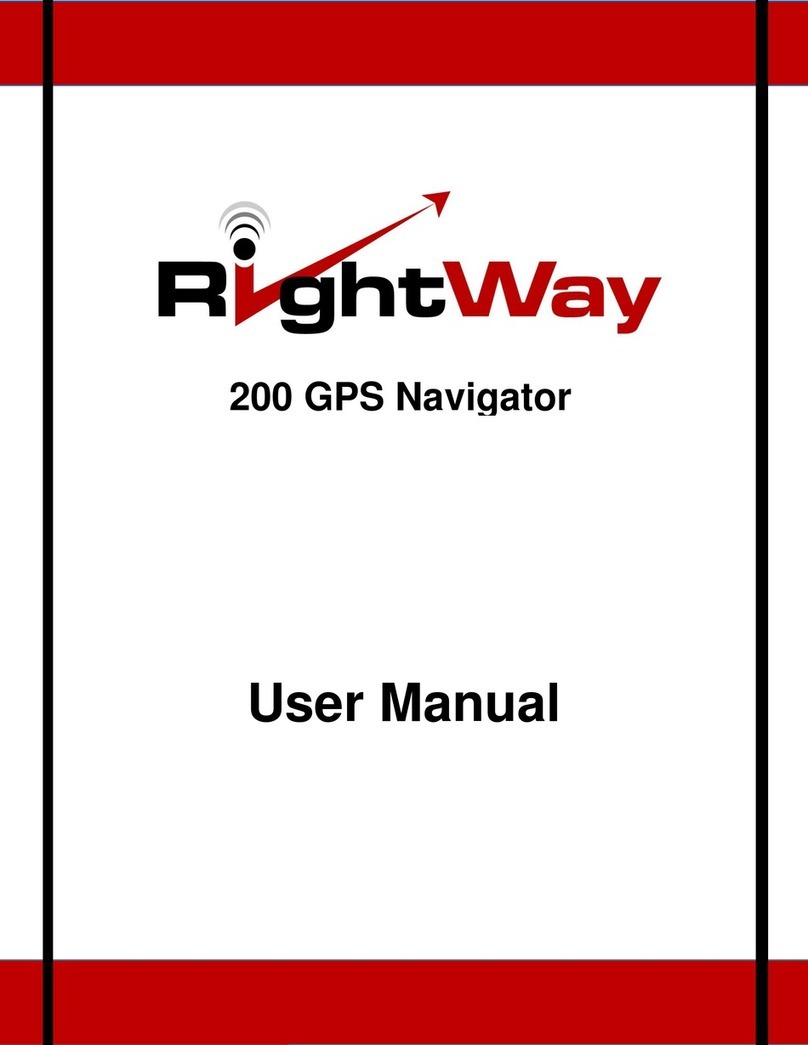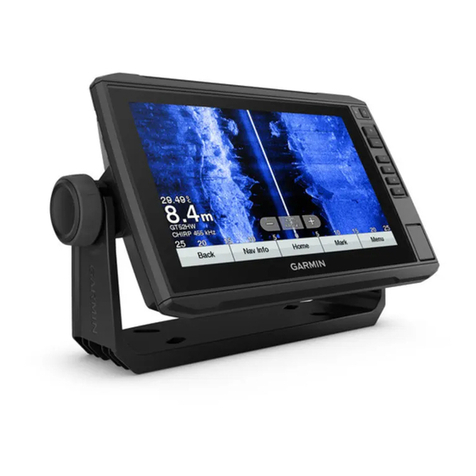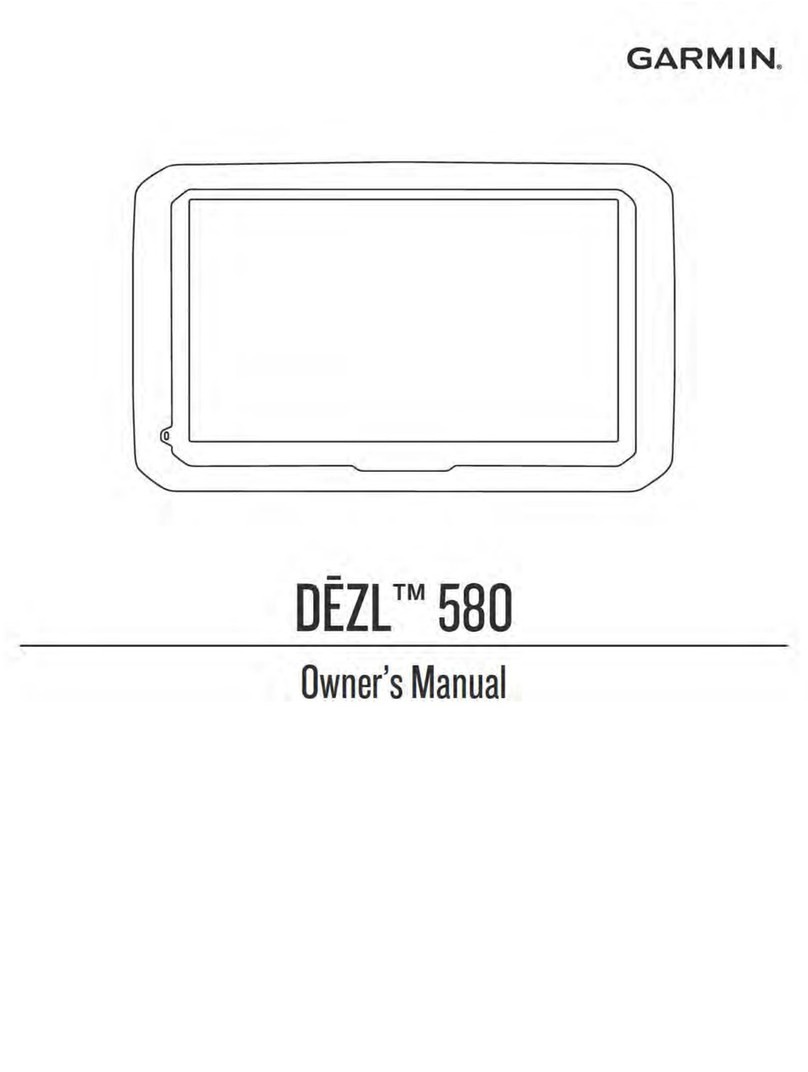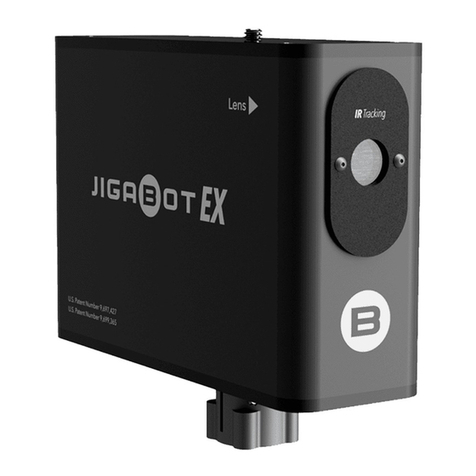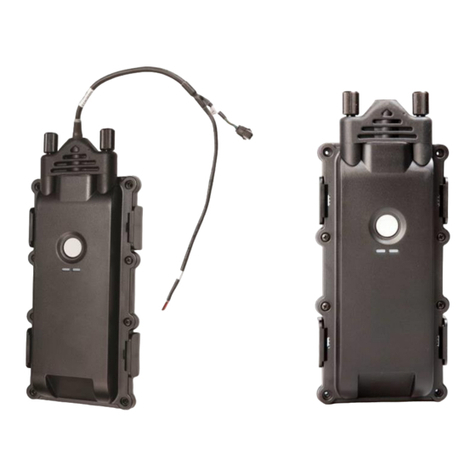System Operation
6KFC 225 AUTOMATIC FLIGHT CONTROL SYSTEM Rev. 0
Apr/99
6. NAVIGATION (NAV) MODE
SELECTOR BUTTON - When
pressed, will arm the navigation
mode. If the selected navigation sen-
sor is less than 50% deflected when
armed, the system will automatically
capture. Otherwise the capture point
will vary based on needle deflection
and closure rate. The mode provides
automatic beam capture and track-
ing of VOR, LOC or GPS as
selected for presentation on the HSI.
NAV mode is recommended for en
route navigation tracking. If pressed
when NAV mode is either armed or
coupled, will disengage the mode.
This button will engage the flight
director.
7. APPROACH (APR) MODE
SELECTOR BUTTON - When
pressed, will arm the Approach
mode. If the selected navigation sen-
sor is less than 50% deflected when
armed, the system will automatically
capture. Otherwise the capture point
will vary based on needle deflection
and closure rate. This mode pro-
vides automatic beam capture and
tracking of VOR, GPS or LOC with
Glideslope (GS) on an ILS, as
selected for presentation on the HSI.
APR ARM will annunciate. If pressed
when APR mode is either armed or
coupled, will disengage the mode.
This button will engage the flight
director. (See the NOTE following
item 8).
8. BACK COURSE APPROACH
(REV) MODE SELECTOR BUTTON
– (not available when optional ED
461 EHSI installed). When pressed,
will select the back course approach
mode. If the selected navigation sen-
sor is less than 50% deflected when
armed, the system will automatically
capture. Otherwise the capture point
will vary based on needle deflection
and closure rate. This mode func-
tions similarly to the approach mode
except that the autopilot response to
LOC signals is reversed and glides-
lope is inhibited. This button will
engage the flight director.
NOTE: If the optional ED 461
EHSI is installed, front and back
course selection is automatic and is
dependent upon the relative differ-
ence between the airplane heading
and the selected approach course. If
the airplane heading differs from the
selected course by greater than
105°, REV ARM will automatically
annunciate in anticipation of tracking
a localizer back course. If prior to
localizer capture the heading
changes (ie. during radar vectors or
a procedure turn) and falls within
105° of the selected course, APR
ARM will annunciate in anticipation
of tracking the localizer front course.
9. ALTITUDE HOLD (ALT) MODE
SELECT BUTTON - When
pressed, will engage the Altitude
Hold mode. The altitude maintained
is the altitude at the moment the ALT
button is pressed. If the ALT button
is pressed with an established climb
or descent rate present, there will be
approximately a 10% (of VS rate)
overshoot, with the airplane returned
positively to the selected altitude. If
pressed when ALT hold mode is
engaged, will disengage the mode,
defaulting to PIT mode. This button
will engage the flight director.
KFC 225 AUTOMATIC FLIGHT CONTROL SYSTEM
System Operation
7
Rev. 0
Apr/99
10. VERTICAL TRIM (UP/DN) BUT-
TONS - The response of these but-
tons is dependent upon the vertical
mode present when pressed. If PIT
mode is active, successive button
presses will move the pitch attitude
hold reference either up or down by
0.5° per press, or at the rate of 0.8°
per second if held continuously, syn-
chronizing the pitch attitude refer-
ence to the current pitch attitude
upon release. If VS mode is active,
the initial button press will bring up
the commanded vertical speed in the
display. Subsequent immediate but-
ton presses will increment the verti-
cal speed command either up or
down at the rate of 100 ft/min per
button press, or at the rate of
approximately 300 ft/min per second
if held continuously. If ALT mode is
active, successive button presses
will move the altitude hold reference
altitude either up or down by 20 feet
per press, or if held continuously will
command the airplane up or down at
the rate of 500 ft/min, synchronizing
the altitude hold reference to the
actual airplane altitude upon button
release. (Note that neither the pitch
attitude nor the altitude hold refer-
ence is displayed. The display will
continue to show the altitude alerter
reference.)
11. ROTARY KNOBS - Used to
set the altitude alerter/altitude prese-
lect reference altitude. Large (outer)
knob changes reference by 1000’s
of feet, and the small (inner) knob
changes reference by 100’s of feet.
When the flight director is engaged,
will automatically arm a preselect
altitude hold capture.
12. VERTICAL SPEED (VS) MODE
SELECTOR BUTTON – When
pressed will engage the vertical
speed hold mode. The vertical
speed maintained is the vertical
speed present at the moment the VS
button is pressed. The vertical speed
command reference will initially be
displayed in place of the altitude
alert annunciation, defaulting back in
3 seconds to the altitude alerter
value. Pressing either the UP or DN
button will again cause the vertical
speed command reference to be dis-
played while causing it to increase or
decrease. When the VS button is
pressed again, it will disengage the
vertical speed mode. This button will
engage the flight director.
13. ALTITUDE ARM (ARM) BUT-
TON - When pressed will toggle alti-
tude arming on or off. When ALT
ARM is annunciated, the automatic
flight control system will capture the
altitude displayed in the Altitude
Alerter/Vertical Speed Display (pro-
vided the aircraft is climbing or
descending to the displayed alti-
tude). ALT ARM mode is engaged
automatically whenever the selected
altitude is changed via the rotary
knobs. Note that the alerter functions
are independent of the arming pro-
cess thus providing full time alerting,
even when the flight director is dis-
engaged. This button will engage the
flight director.
